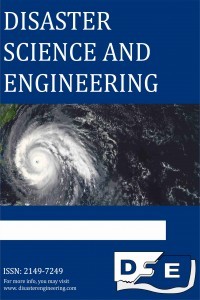Risk Management and Microzonation in Urban Planning: An Analysis for Istanbul
Risk Management and Microzonation in Urban Planning: An Analysis for Istanbul
Microzonation, urban planning, disaster sensitive planning, risk management suitability maps for settlement, İstanbul,
___
- H. Türkoğlu, Afet Dirençli Şehir Planlama ve Yapılaşma .Istanbul, 2014
- Yayın Aralığı: Yılda 2 Sayı
- Başlangıç: 2015
- Yayıncı: Emrah DOĞAN
Earthquake Analysis of Concrete Arch Dams Considering Elastic Foundation Effects
Muhammet KARABULUT, Murat Emre KARTAL, Omer Faruk CAPAR, Murat CAVUSLİ
Risk Management and Microzonation in Urban Planning: An Analysis for Istanbul
Ayca CELİKBİLEK, Gokhan SAPMAZ
Design Issues of Buried Pipelines at Permanent Ground Deformation Zones
Eren UCKAN, Bulent AKBAS, Ercan Şerif KAYA, Ferit ÇAKIR, Cengiz IPEK, Murat MAKARACI, Şenol ATAOGLU
Determination of Earthquake Effects on Sandy Soils for the City of Eskisehir, Turkey
Mehmet İnanc ONUR, Mustafa TUNCAN, Ahmet TUNCAN
Avalanche Research Studies at Bozdağ
Önder KOÇYİĞİT, Erhan TEKİN, Gökhan ARSLAN
Seismic Behaviour Evaluation of Suleymaniye Mosque Under Different Earthquake Records
